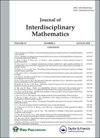最小一元问题的割线新方法
IF 0.8
Q1 MATHEMATICS
引用次数: 0
摘要
在单变量情况下,传统的牛顿方法是最受欢迎的。新的割线方法是基于二阶泰勒展开,它消除了计算二阶导数的必要。数值试验表明,与现有的牛顿法(n -法)相比,新的割线法具有数值性和有效性。本文章由计算机程序翻译,如有差异,请以英文原文为准。
A new secant method for minima one variable problems
In single variable situations, the traditional Newton’s approaches are the most popular. The new secant approach is based on the 2nd order Taylor expansion, which eliminates the necessity to compute the second derivative. Numerical tests have shown that the new secant approach is both numerical and effective when compared to the existing Newton method (N-method).
求助全文
通过发布文献求助,成功后即可免费获取论文全文。
去求助
来源期刊

JOURNAL OF INTERDISCIPLINARY MATHEMATICS
MATHEMATICS-
CiteScore
2.70
自引率
23.50%
发文量
141
期刊介绍:
The Journal of Interdisciplinary Mathematics (JIM) is a world leading journal publishing high quality, rigorously peer-reviewed original research in mathematical applications to different disciplines, and to the methodological and theoretical role of mathematics in underpinning all scientific disciplines. The scope is intentionally broad, but papers must make a novel contribution to the fields covered in order to be considered for publication. Topics include, but are not limited, to the following: • Interface of Mathematics with other Disciplines • Theoretical Role of Mathematics • Methodological Role of Mathematics • Interface of Statistics with other Disciplines • Cognitive Sciences • Applications of Mathematics • Industrial Mathematics • Dynamical Systems • Mathematical Biology • Fuzzy Mathematics The journal considers original research articles, survey articles, and book reviews for publication. Responses to articles and correspondence will also be considered at the Editor-in-Chief’s discretion. Special issue proposals in cutting-edge and timely areas of research in interdisciplinary mathematical research are encouraged – please contact the Editor-in-Chief in the first instance.
 求助内容:
求助内容: 应助结果提醒方式:
应助结果提醒方式:


